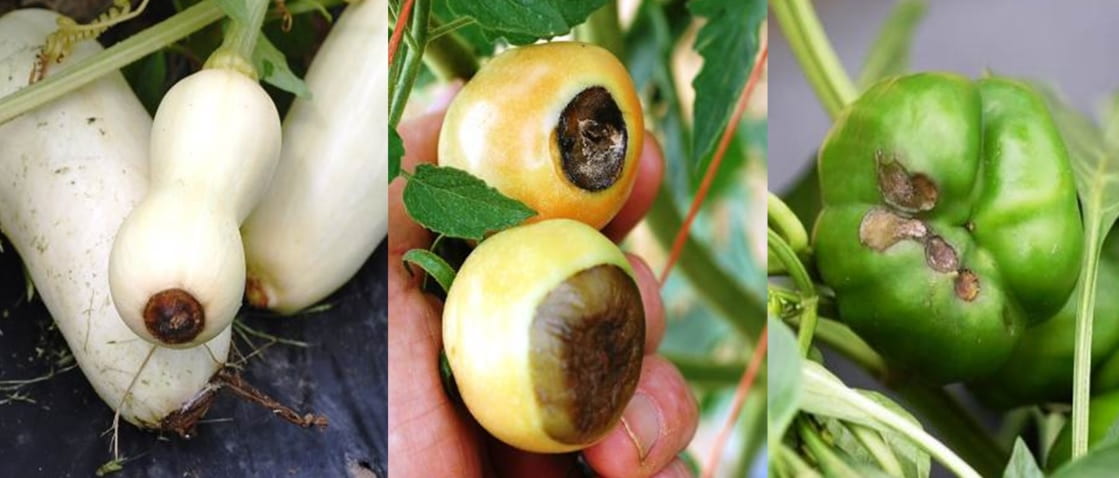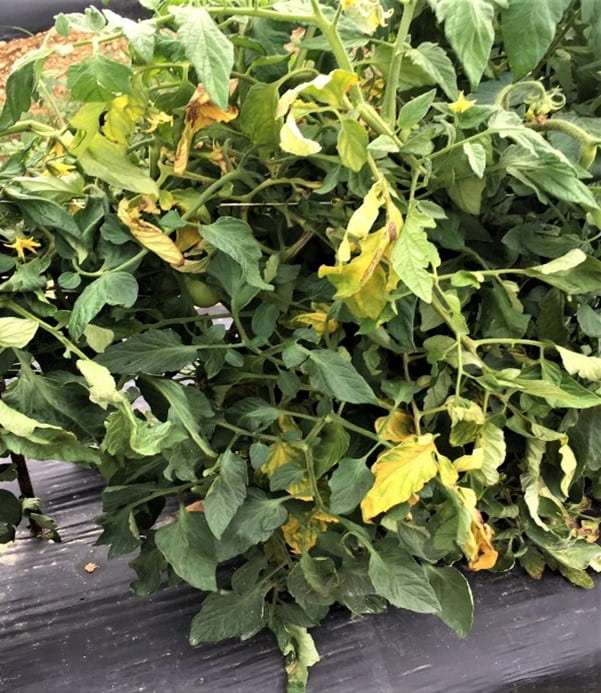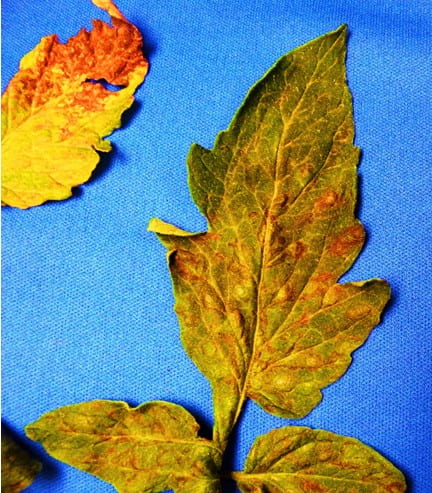Corn earworm moths counts in pheromone traps have been increasing over the past few days in some areas in Maryland and Delaware. Sweet corn growers should keep an eye out and consider shortening spray intervals to a 2 to 3-day spray schedule while others could still be around a 3 to 4-day spray schedule.
Month: July 2022
Unusual Disease of Garlic Scapes Found in Maryland
Unusual Disease of Garlic Scapes Found in Maryland
By Jerry Brust, UME and Karen Rane, UMD Plant Diagnostic Lab
A grower noticed over the last few years lesions developing on their garlic scapes which then collapsed in the field. In previous years these collapsed scapes amounted to only a small number, but this year the losses are much greater approaching 30%. Symptoms consist of sunken lesions about ¼ to ½ inch long, that cause twisting, girdling and collapse of the scape. Lesions initially are cream to tan-colored but under rainy or very humid conditions, spore production by the fungus causes lesions to turn orange (fig 1). This disease is anthracnose of garlic, a new disease to Maryland and is caused by the fungus Colletotrichum fioriniae. The fungus may survive on crop residue in the soil from a previous garlic crop or the disease may be spread by infected bulbils used for propagation. Disease development is favored by rainy or very humid weather and warm temperatures (78-88o F). Anthracnose of garlic does not affect bulbs, but scape yield could be reduced as will bulbil production.

Reports from New England indicate that onion is most likely not affected by this fungus. C. fioriniae has also been reported as causing bitter rot on pear and anthracnose on celery and cherry tomato. Crop rotation away from any member of the onion family may help reduce disease incidence. Besides crops, weeds such as common lambsquarters, redroot pigweed, yellow nutsedge and common groundsel may also be infected with the pathogen but be symptomless. Because this is such a new disease of garlic, fungicide recommendations have yet to be determined. However, products that are labeled and effective against purple blight of onion may be useful against this disease.
Blossom End Rot Common so Far this Season.
Blossom End Rot Common so Far this Season.
By Jerry Brust, UME
This summer has been unusual as it has been about normal for temperatures if not a little cooler, but we have had greatly varying amounts of rainfall over the last month. Some areas have remained dry with storms just missing farms while others have been hit with some heavy rains. This can make watering vegetables challenging to avoid problems such as blossom end rot, which is caused by a calcium deficit in the developing fruit.

Calcium (Ca) moves to the plant via mass flow, i.e., where dissolved minerals like calcium move to the root in soil water that is flowing towards the roots. As it passes through the plant Ca is deposited in tiny amounts into the fruit. If anything slows or interrupts this stream the tiny amount of Ca needed at that moment is not deposited and the area furthest from the top of the fruit suffers—resulting in blossom end rot (BER). I have seen more BER this year on a large number of different vegetables than I have in the past several years (fig 1).
Figure two shows how precise and constant the Ca flow in a plant has to be to supply just the right amount of Ca at the right time. The large fruit on this particular plant developed before there was a Ca interruption, but the fruit a little younger suffered a Ca interruption, with the smallest (youngest) fruit suffering the greatest Ca interruption. At the time it was taken tissue analysis from this same plant showed that calcium was in the moderate range when the blossom end rot took place, demonstrating the importance of irrigation and water supply to reduce blossom end rot. Not much you can do about no rains or heavy rains, except try to maintain as even a water supply to your vegetables as is possible and remove any fruit from the plant you find that has blossom end rot.

Tomato Pith Necrosis in Maryland
Tomato Pith Necrosis in Maryland
By Jerry Brust, UME
In the last week a few tomato fields in Maryland were found with the same disease called tomato pith necrosis. Just about all the problem tomatoes were from early planted fields. Tomato pith necrosis is caused by the soilborne bacterium Pseudomonas corrugata. Although in the past this disease occurred sporadically in Maryland, over the last few years it is appearing more frequently. Tomato pith necrosis usually is found in early planted tomatoes when night temperatures are cool, but the humidity is high, and often plants are growing too rapidly because of excessive nitrogen application. We have had a spring/early summer with some cool nights and high humidity.

Tomato Spotted Wilt Virus in Tomatoes
Tomato Spotted Wilt Virus in Tomatoes
By Jerry Brust, UME
A few high tunnels and even a couple of tomato fields have been found with tomato spotted wilt virus (TSWV) in Maryland. The high tunnel finds were not too surprising
but the fields were, as we usually do not see field infections until much later into the season. TSWV has also been found in greenhouse and field production of cut flowers. So it appears this virus is more common this year than it usually is, most probably due to greater thrips populations being present in our greenhouse production areas.
